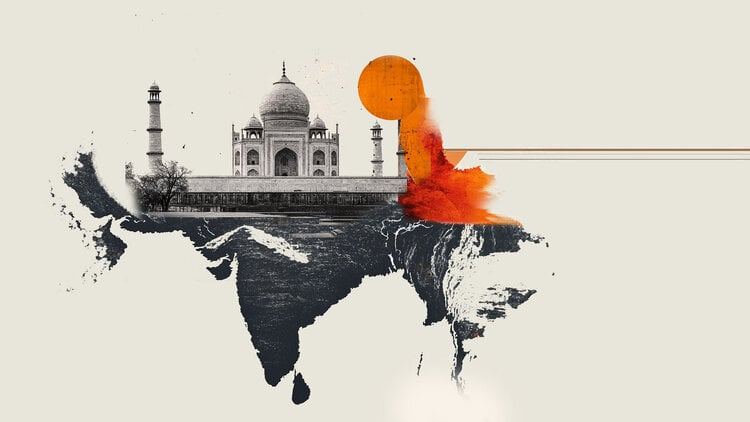- Indian Rupee gains ground in Monday’s early European session.
- Rising foreign inflows and lower crude oil prices support the INR.
- Concerns over geopolitical tensions between India and Pakistan might cap the Indian Rupee’s upside.
The Indian Rupee (INR) gathers strength on Monday. Foreign Portfolio Investors (FPIs) continue to buy Indian equities for the seventh consecutive day. This, in turn, could boost the local currency against the Greenback in the near term. Furthermore, the decline in Crude oil prices contribute to the INR’s upside, as India is the third largest consumer of crude oil in the world.
On the other hand, rising tension with Pakistan could trigger a risk-off sentiment among traders, which might drag the Indian currency lower. The ceasefire violation along the Line of Control (LoC) came days after the Pahalgam terror attack, which killed 26 people, mostly tourists, in the Baisaran valley near Pahalgam, Jammu and Kashmir.
The US Dallas Fed Manufacturing Business Index for April will be published later on Monday. The preliminary reading of US Gross Domestic Product (GDP) for the first quarter (Q1) will be in the spotlight on Wednesday ahead of the US Nonfarm Payrolls (NFP) report, which is due later on Friday.
Indian Rupee trades stronger despite India-Pakistan tensions
- Tensions between India and Pakistan are rising after Pakistan violated a ceasefire across the LoC after the Pahalgam terror attack. On Thursday night, hours after suspending the Simla Agreement of 1971, the Pakistan Army breached the truce along the LoC and began firing at various sites. The Indian Army has responded “effectively.”
- The Reserve Bank of India is expected to cut the Repo Rate to 5.50% by end-Q3 (vs. 5.75% in March poll), according to the Reuters poll.
- US Agriculture Secretary Brooke Rollins said on Sunday that the Trump administration is having daily conversations with China over tariffs, per Reuters. Rollins added that there were ongoing talks between the two nations and that trade deals with other nations were “very close.”
US President Donald Trump said on Friday that the US will be reasonable on tariffs, adding that markets are adjusting to tariff policy. - The University of Michigan (UoM) Consumer Sentiment in April rose to 52.2 from 50.8 in the previous reading, better than the estimation of 50.8. Consumers’ inflation expectations for one year eased to 6.5% in April versus 6.7% prior.
USD/INR’s outlook remains bearish below the 100-day EMA
The Indian Rupee trades firmer on the day. The negative outlook of the USD/INR pair remains intact, characterized by the price holding below the key 100-day Exponential Moving Average (EMA) on the daily chart. Additionally, the 14-day Relative Strength Index (RSI) stands below the midline near 41.00, supporting the sellers in the near term.
The lower limit of the descending trend channel at 84.80 acts as an initial support level for USD/INR. Extended losses could see a drop to 84.22, the low of November 25, 2024. Further south, the additional downside filter to watch is 84.08, the low of November 6, 2024.
In the bullish case, the first upside barrier is located at 85.80, the 100-day EMA. If the pair breaks above this level, it could draw in more bullish pressure and push the pair toward 86.35, the upper boundary of the trend channel.
RBI FAQs
The role of the Reserve Bank of India (RBI), in its own words, is “..to maintain price stability while keeping in mind the objective of growth.” This involves maintaining the inflation rate at a stable 4% level primarily using the tool of interest rates. The RBI also maintains the exchange rate at a level that will not cause excess volatility and problems for exporters and importers, since India’s economy is heavily reliant on foreign trade, especially Oil.
The RBI formally meets at six bi-monthly meetings a year to discuss its monetary policy and, if necessary, adjust interest rates. When inflation is too high (above its 4% target), the RBI will normally raise interest rates to deter borrowing and spending, which can support the Rupee (INR). If inflation falls too far below target, the RBI might cut rates to encourage more lending, which can be negative for INR.
Due to the importance of trade to the economy, the Reserve Bank of India (RBI) actively intervenes in FX markets to maintain the exchange rate within a limited range. It does this to ensure Indian importers and exporters are not exposed to unnecessary currency risk during periods of FX volatility. The RBI buys and sells Rupees in the spot market at key levels, and uses derivatives to hedge its positions.





